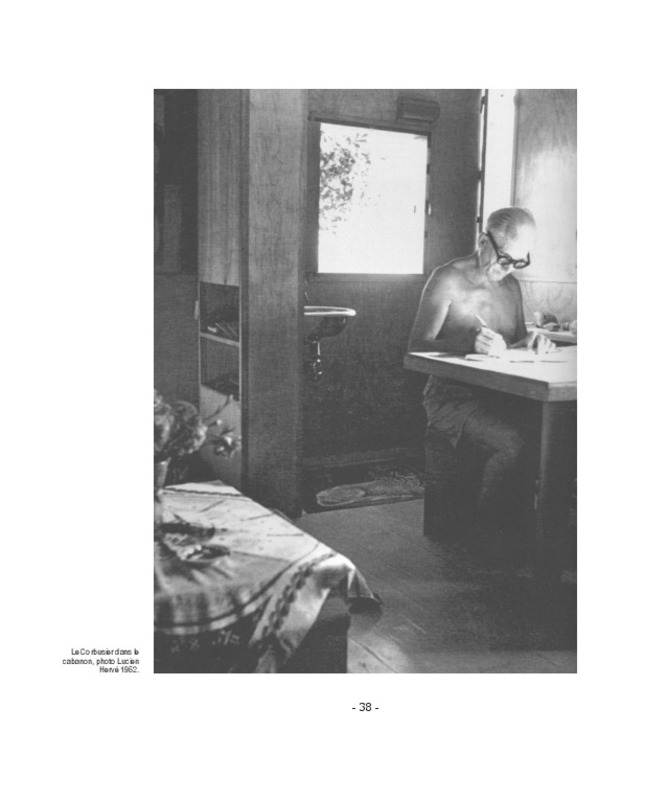|
Resumen:
|
[ES] A finales de la década de 1920, Le Corbusier mostró un interés por la vestimenta moderna femenina, hasta el punto de proclamar que de la revolución vestimentaria dependía la revolución de la arquitectura. Esta afirmación ...[+]
[ES] A finales de la década de 1920, Le Corbusier mostró un interés por la vestimenta moderna femenina, hasta el punto de proclamar que de la revolución vestimentaria dependía la revolución de la arquitectura. Esta afirmación causa sorpresa, porque las teorías de la arquitectura moderna y el diseño han rechazado o soslayado la cuestión vestimentaria. Por lo demás, la idea de Le Corbusier ha sido considerada ambigua. ¿Cómo, por qué, en pleno avance industrial, en la era de la máquina, basar la arquitectura en la vestimenta ? Sus escritos diversos sobre la cuestión, desde los años 1910 hasta la década de 1940, permiten apreciar dos puntos de vista opuestos que se hacen eco de las controversias y de las divergencias ideológicas características de esa época: estándar contra individualidad, teoría protética contra teoría rítmica. Es así como, concentrándonos en un diseño de vestimenta que esbozó en los años cincuenta, ponemos de manifiesto su posición positivamente paradójica y en qué medida esta es adecuada para «revestir» la teoría –su teoría–, así como ciertas teorías que le convocan.
[-]
[EN] At the end of the 1920s, Le Corbusier showed interest in modern feminine clothing to the point of proclaiming that the revolution in architecture depended on the dress revolution. This assertion is surprising since ...[+]
[EN] At the end of the 1920s, Le Corbusier showed interest in modern feminine clothing to the point of proclaiming that the revolution in architecture depended on the dress revolution. This assertion is surprising since the theories of modern architecture and design have rejected or neglected the issue of clothing. The corbusean conception is moreover considered ambiguous. How, why, in the midst of industrial change, in the age of the machine, found architecture in clothing? His scattered writings on the subject, from the 1910s to the 1940s, brought to light two opposing points of view which turned out to echo the controversies and ideological divergences characteristic of this era : standard versus individuality, prosthetic theory versus rhythmic theory. It is then by focusing on a dress design that he sketched in the 1950s that we reveal his positively paradoxical position, and how it is suitable for «dressing» the theory –his theory–, as well than certain theories that involve it.
[-]
[FR] A la fin des années 1920, Le Corbusier a exprimé un intérêt pour le vêtement moderne féminin au point de proclamer que de la révolution vestimentaire dépendait la révolution de l’architecture. Cette assertion étonne ...[+]
[FR] A la fin des années 1920, Le Corbusier a exprimé un intérêt pour le vêtement moderne féminin au point de proclamer que de la révolution vestimentaire dépendait la révolution de l’architecture. Cette assertion étonne puisque les théories de l’architecture moderne et du design ont rejeté ou délaissé la question vestimentaire. La conception corbuséenne, d’ailleurs, est jugée comme ambiguë. Comment, pourquoi, en plein tournant industriel, à l’âge de la machine, fonder l’architecture dans le vêtement ? Ses écrits épars sur le sujet, depuis les années 1910 aux années 1940, permettent de mettre au jour deux points de vue opposés qui s’avèrent faire écho à des controverses et à des divergences idéologiques caractéristiques de cette époque : standard contre individualité, théorie prothétique contre théorie rythmique. C’est dès lors en nous penchant sur un design de vêtement qu’il a esquissé dans les années 1950 que nous révélons sa position positivement paradoxale, et en quoi elle est propre de la sorte à « rhabiller » la théorie —sa théorie–, ainsi que certaines théories qui la convoquent.
[-]
|








